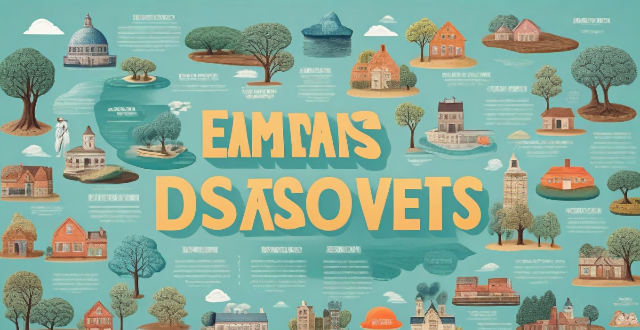The text describes the various types of climate disasters, including floods, droughts, hurricanes and typhoons, earthquakes, and wildfires. It explains the causes and effects of each type of disaster. The effects include loss of life, property damage, crop failure, water shortages, soil degradation, social unrest, economic disruption, and psychological trauma. The article concludes that mitigating the impacts of these disasters requires preparedness, adaptation strategies, and international cooperation to address the root causes and build resilience against future events.

Most Common Types of Climate Disasters
Climate disasters, also known as natural disasters, are events caused by environmental factors that result in loss of life, property damage, and economic disruption. These disasters can be classified into several types based on their causes and effects. The most common types of climate disasters include:
Floods
Floods occur when water overflows from rivers, lakes, or oceans and submerges usually dry land. They can be caused by heavy rainfall, rapid snowmelt, storm surges, or the failure of dams and levees. Floods are among the most frequent and widespread of all weather-related disasters.
Effects of Floods:
- Loss of life and injury
- Destruction of homes and infrastructure
- Crop damage and loss of livestock
- Contamination of drinking water sources
- Economic disruption
Droughts
Droughts are extended periods of abnormally low precipitation, leading to a shortage of water for crops, livestock, and human consumption. Droughts can cause soil erosion, reduced crop yields, and increased vulnerability to wildfires.
Effects of Droughts:
- Crop failure and food scarcity
- Water rationing and restrictions
- Soil degradation and desertification
- Economic impacts on agriculture and related industries
- Social unrest due to resource scarcity
Hurricanes and Typhoons
Hurricanes (known as typhoons in the Pacific Ocean) are intense tropical storms with strong winds, heavy rainfall, and storm surges that can cause significant damage to coastal areas. These storms form over warm ocean waters and are fueled by the energy released when moisture condenses.
Effects of Hurricanes and Typhoons:
- High winds causing structural damage
- Storm surges leading to flooding
- Torrential rains contributing to mudslides and floods
- Disruption of transportation and communication networks
- Long-term economic impacts on affected regions
Earthquakes
Earthquakes occur when there is a sudden release of energy within the Earth's crust, causing seismic waves that can lead to violent shaking of the ground. They can trigger tsunamis, landslides, and building collapses.
Effects of Earthquakes:
- Loss of life and injuries due to collapsed buildings
- Damage to infrastructure such as roads, bridges, and utilities
- Landscape changes like fissures and ground displacement
- Tsunamis if earthquakes occur under the ocean
- Long-lasting psychological trauma for survivors
Wildfires
Wildfires are uncontrolled fires that burn in wilderness areas or rural regions, often triggered by lightning strikes or human activities. Climate change has exacerbated the frequency and intensity of wildfires in many parts of the world.
Effects of Wildfires:
- Destruction of forests and habitats
- Threat to human settlements and lives
- Air quality degradation due to smoke and particulates
- Loss of biodiversity and ecosystem services
- Economic losses for tourism and recreation industries
In conclusion, these climate disasters have far-reaching consequences on human societies, ecosystems, and economies. Mitigating their impacts requires preparedness, adaptation strategies, and international cooperation to address the root causes and build resilience against future events.